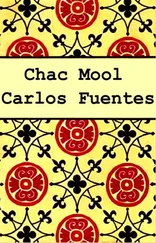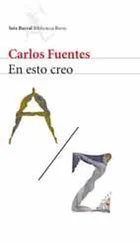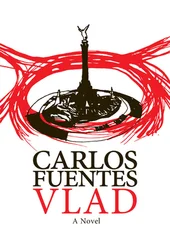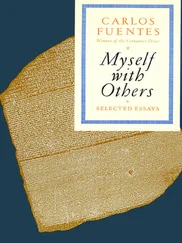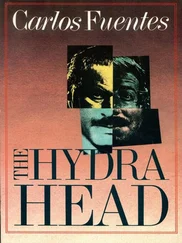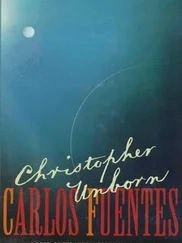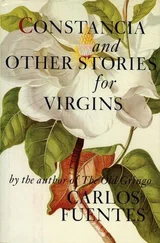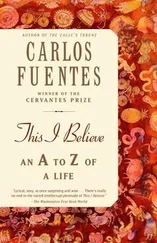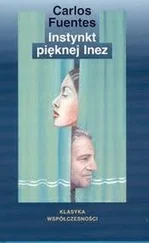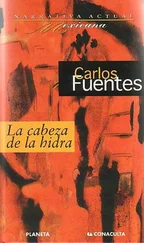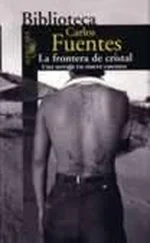Carlos Fuentes - Terra Nostra
Здесь есть возможность читать онлайн «Carlos Fuentes - Terra Nostra» весь текст электронной книги совершенно бесплатно (целиком полную версию без сокращений). В некоторых случаях можно слушать аудио, скачать через торрент в формате fb2 и присутствует краткое содержание. Год выпуска: 1987, Издательство: Farrar, Straus and Giroux, Жанр: Современная проза, на английском языке. Описание произведения, (предисловие) а так же отзывы посетителей доступны на портале библиотеки ЛибКат.
- Название:Terra Nostra
- Автор:
- Издательство:Farrar, Straus and Giroux
- Жанр:
- Год:1987
- ISBN:нет данных
- Рейтинг книги:3 / 5. Голосов: 1
-
Избранное:Добавить в избранное
- Отзывы:
-
Ваша оценка:
- 60
- 1
- 2
- 3
- 4
- 5
Terra Nostra: краткое содержание, описание и аннотация
Предлагаем к чтению аннотацию, описание, краткое содержание или предисловие (зависит от того, что написал сам автор книги «Terra Nostra»). Если вы не нашли необходимую информацию о книге — напишите в комментариях, мы постараемся отыскать её.
Terra Nostra — читать онлайн бесплатно полную книгу (весь текст) целиком
Ниже представлен текст книги, разбитый по страницам. Система сохранения места последней прочитанной страницы, позволяет с удобством читать онлайн бесплатно книгу «Terra Nostra», без необходимости каждый раз заново искать на чём Вы остановились. Поставьте закладку, и сможете в любой момент перейти на страницу, на которой закончили чтение.
Интервал:
Закладка:
In the distance, the bombardment has begun once again, the indication that day is approaching. But the Old Woman, impervious in serenity as she is in terror, reflects, indifferent to the renewed threat the new dawn promises. Her prolonged pause is like a cinematic dissolve, it is as if she were awaiting the authorization of the first rays of the sun to renew her tale, and as if this nascent light, today, in the Veracruz sierra were in reality the congealed light of a foreseen, promised, surpriseless day.
The fire is going out.
You open your arms wide in a normal stretching gesture that might be confused with praise to the emerging sun that now transforms the cold of night into the fresh heat of a tropical daybreak (announcing, in turn, a long, humid, burning, implacable day). But on the woman’s narrow profile, scarcely visible through the white cloth covering her face (illuminated all night from the earth by the weak fire, as now from the east by the ambling sun), there is a question. You ask yourself whether that nascent sun sheds light on itself or upon us. But you cannot help thinking you are merely repeating the question your prisoner asks herself in silence.
As every morning, the Phantoms swoop by swiftly, flying low, strafing indiscriminately; we all protect ourselves, we tuck our heads between our legs and join our hands over our necks. In the distance, the airplanes drop their full loads of fragmentation bombs, circle through the sky, gain altitude, and disappear. The Old Woman, with no motive, begins to laugh, then drags herself across the floor, turning her head from side to side, until she finds what she is looking for. Brusque movement; every morning’s sudden fear of death, but as soon as the familiar and momentary threat passes, normality is restored with amazing speed. The Old Woman, like everyone else, had crouched into a fetus shape, flinging from her what she held in her hands. And now, as if nothing had happened, quite naturally, she picks it up, strokes it several times, finds the old container filled with glue, and begins her work. There is almost no light (the fire has gone out; it is not worth the effort to light another; the day is beginning). Following fear, there is silence. From time to time, you look at one another; you wait. Her hands move with agility.
You ask: “What is it?”
“Come closer.”
“May I see it?”
“There is little light. Come. Touch it. Do not be afraid.”
“Then you have finished?”
You know she smiles, and that her smile is two answers: she finished it some time ago; she will never finish it.
“Yes, come here. What do you think it is?”
“It’s in the shape of a bird.”
“Yes, but that’s incidental. Almost an accident.”
“It’s like touching a bird. Those are feathers, I’m sure of that.”
“And in the center? In the very center?”
“Just a minute … no, not feathers, I’d say … I’d say they’re … ants.”
“Wrong again. Spiders. The creatures without time.”
“But those lines … like ribs … that seem to divide the cloth…”
“You can call it cloth, if you wish…”
“… that seem to divide it into zones … of feathers … and then separate the feathers from that … that field of spiders, you say … a field of spiders in the very center, yes…”
“Touch it, touch it, run your fingers over it. Follow the ribs to their ends.”
“Let me feel it … like branches … very fine … filaments, almost … but they end, they end, like darts…”
“Arrows. Arrows divide the field. The known field. They partition it. We need light. I wish you could see the colors.”
“Dawn is coming.”
“There are divisions of green, blue, garnet, and yellow feathers.”
“Soon we will be able to see it together.”
“The color of each field indicates the kind of bird that can be hunted there. In addition, these are the actual feathers of the birds that inhabit each sector of the jungle. The quetzal, the hummingbird, the macaw, the golden pheasant, the wild duck, and the heron. Each area is irregular, do you feel it? except for the center. That is regular; it has a perfect circumference. That is the forbidden part of the jungle. There are no feathers there; no one can derive sustenance there; there nothing can be hunted and killed to satisfy the hunger of the body; there dwell the masters of words, signs, and enchantments. Their kingdom is the field of dead spiders that I join with glue to the object you call cloth. And the limits of the cloth are those of the known world. One can go no farther. But one would like to go farther. The tips of the arrows all point outward. Toward the unknown world. They are a limit; they are also invitation. The frontier between the hearth and the marvelous. This is what the Indian woman told me in her tongue as she handed me this offering the first time I came to this land.”
You recall the sparse information, given the difficulty of communications, you have been able to obtain. She entered the country on a tourist’s visa, and she was a professional anthropologist. At least that’s what her papers said. An English father and a Spanish mother, or vice versa, this was not clear. You could not verify her name, or the date of her birth. She was captured while wandering around the camp site, wearing the white cloth mask that covers her face; she said it was for protection against mosquitoes. In the present situation, there was only one possible attitude: suspicion, presumption of guilt. She had said nothing that would prove the innocence of her occupation or that of her appearance in the very place where you are directing the war of resistance. By her voice, her hands, her hunched figure, you deduced that she is old. That is what you call her: Old Woman. She continues to glue the spiders, in silence now. You watch her. Life is renewing all around us. You listen. Water is being drawn by hand, bicycle tires inflated — the whistle of escaping air, bullets introduced into rifle chambers; someone is raking a nearby garden; refugee children nurse at the breasts of women squatting against walls facing the sun. But the beating of the drum envelops and dominates everything else. A naked, bleeding messenger enters the camp and falls to his knees, panting. One hears distant Indian flutes.
“The music of the Nayar,” murmured the Old Woman. “I knew a village of Coras where the church had been abandoned. I was there once, and I recall hearing that music of flute and drum. The church was constructed a little more than two centuries ago, after the late Spanish conquest of that rebellious and inaccessible region. The Indians, the ancient fallen princes, were the masons on the construction. The missionaries showed them engravings of the saints, and the Indians reproduced the images in their own fashion. The church was an indigenous paradise, an opaque vessel containing the colors and forms of the lost kingdom. The altars were golden birds chained to the earth. The dome was an enormous smoking mirror. The white faces of the plaster sculptures laughed bestially; the dark faces wept. One could believe that the Coras, only recently defeated, were reaffirming the continuity of their lives by appropriating the symbols of the conquistador and investing them with a form that continued to represent aboriginal heavens and hells. The missionaries tolerated that transformation. After all, the cross governed. And now one sign would represent the same promise, formerly fragmented into a thousand divinities of wind and sun, water and deer, parrot and blazing bramble. When the work was completed, the missionary pointed to the Christ on the altar and said that the church was the place of love because in it reigned the God of love. The Indians believed it. By night they entered the church and beneath the gaze of that tortured Christ who suffered like them, fornicated at the foot of the altar amid soft bird-like laughter and sighs like wounded cubs’. The missionary discovered them and threatened them with all the fury of Hell. And the Indians could not understand why the God of love could not be witness to love. They had been given a promise, which was the same as permission. And suddenly the fulfillment of the promise had become a prohibition. The Indians rebelled, banished the missionary, and filled with mute deception closed the doors of the church of the false God of love. They decided to visit that church, which for them had been converted into the cloister of Hell, only once a year, and disguised as Devils. The walls are cracked and the atrium is overrun with weeds. A devouring desert, a ruined land whose only temples are the magueys. But the firmament overhead is enormous and burning. The Indians paint their bodies black and white and blue, slowly, caressing one another as if they were again dressing in ancient ceremonial garments: the land is the canvas; the origin of paint is vegetal. Afterward, they simulate a collective fornication beneath the dome of the sky. But the acts of that long sensual passion celebrated every Holy Week are identified with the acts of the Christian Passion. The sighs of abandonment in the Garden of Olives, the cup of vinegar, Calvary, the Crucifixion, the company of the two thieves, the wound in the side, the garment wagered at dice, death, the deposition, and the burial of the holy body are interpreted sexually, like a sorrowful sodomy: God, physically, loved men. It is very strange. The church was a symbol and in it they wished to effect a real act. The sun is real, but beneath its rays they enact a merely symbolic act. The ceremony is observed by a masked man on horseback wearing the large sombrero of the horseman. This horseman cloaks his body in a cape of red silk and covers his face with a feather mask. Only on Holy Saturday does he show his face; Christ has arisen, but not the historical Christ who suffered during the reign of Tiberius and was delivered unto Pilate, but the founding god, he who delivered unto men the seeds of corn, who taught them to cultivate and to harvest: a god not belonging to the time of Christ but to the time of a constantly renewed origin. It is very strange. Do you know that place and that ceremony?”
Читать дальшеИнтервал:
Закладка:
Похожие книги на «Terra Nostra»
Представляем Вашему вниманию похожие книги на «Terra Nostra» списком для выбора. Мы отобрали схожую по названию и смыслу литературу в надежде предоставить читателям больше вариантов отыскать новые, интересные, ещё непрочитанные произведения.
Обсуждение, отзывы о книге «Terra Nostra» и просто собственные мнения читателей. Оставьте ваши комментарии, напишите, что Вы думаете о произведении, его смысле или главных героях. Укажите что конкретно понравилось, а что нет, и почему Вы так считаете.

